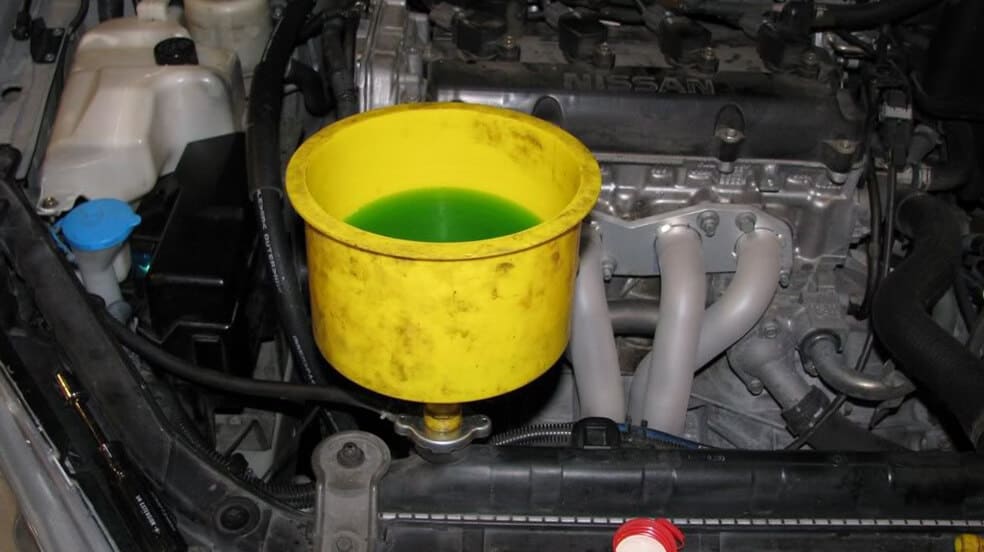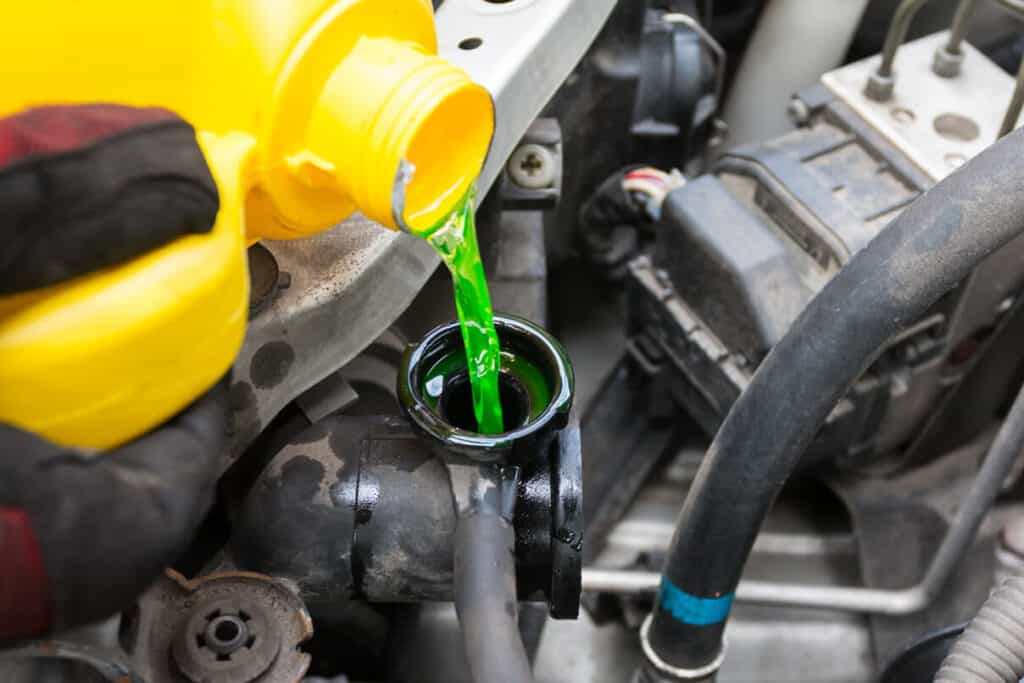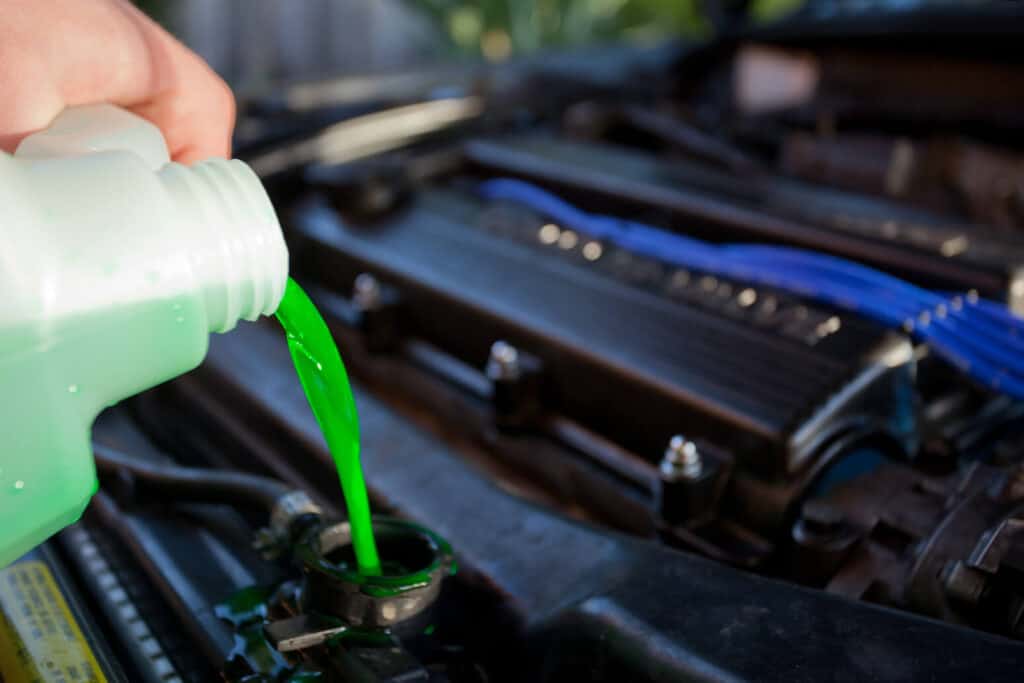What is a Coolant System Bleed?
A coolant system bleed is a procedure performed to remove any air trapped in the cooling system of a vehicle. Air can enter the system during maintenance or repairs and can prevent coolant from circulating effectively. The procedure ensures a consistent flow of coolant, thus maintaining optimal engine temperatures.
How Much Will it Cost to Perform a Coolant System Bleed in Canada?
The cost of performing a coolant system bleed in Canada can vary depending on the vehicle’s make and model, as well as the mechanic’s rates. On average, you can expect the cost to range from $70 to $150. This includes the labour cost, which typically takes about an hour, and the cost of replacement coolant if necessary.

Signs That Indicate the Need for a Coolant System Bleed
• Overheating Engine: If your vehicle’s engine frequently overheats, it might indicate the presence of air in your coolant system. Air pockets can disrupt the flow of coolant, leading to an increase in engine temperature.
• Inconsistent Temperature Gauge Readings: If the temperature gauge on your dashboard is showing inconsistent readings or fluctuating rapidly, it might indicate trapped air in the coolant system. When air surrounds the temperature sensor instead of coolant, it can cause inaccurate readings.
• Coolant Leaks: If you have recently fixed a coolant leak or replaced a part of the coolant system, air might have entered the system during the repair. A bleed is often necessary after such maintenance work to ensure all the air has been removed.
• Noisy Water Pump or Radiator: If you hear a gurgling noise coming from your water pump or radiator, it may be due to air trapped in the coolant system. Air can make the coolant flow uneven, leading to noises.
• Poor Cabin Heating: If the cabin heating isn’t working as well as it should, it could indicate the presence of air in your coolant system. The coolant is also responsible for providing heat inside the vehicle’s cabin, and air pockets can reduce its effectiveness.
Importance of Regular Coolant System Maintenance
Regular coolant system maintenance is critical for maintaining optimal engine temperatures and preventing overheating. It can help catch issues such as leaks, contamination, or air pockets early, which can save costly repairs down the line.
How Does a Coolant System Bleed Work?
During a coolant system bleed, the vehicle is allowed to run until it reaches operating temperature. The radiator cap is removed, and the mechanic watches for air bubbles in the coolant. As the air is released, coolant may need to be added to prevent the system from becoming low.
Can a Coolant System Bleed Improve Engine Cooling Performance?
• Enhances Efficiency: A coolant system bleed can significantly improve the cooling efficiency of your vehicle. Trapped air within the system can create pockets that disrupt the proper circulation of coolant, leading to hot spots in the engine. By bleeding the system, you ensure that coolant can flow freely, maintaining the engine at an optimal operating temperature.
• Prevents Overheating: One of the primary benefits of a coolant system bleed is that it prevents your engine from overheating. Trapped air can cause the engine to run hotter than normal, increasing the risk of overheating. Once the system is properly bled, the risk of overheating is significantly reduced.
• Improves Temperature Gauge Accuracy: Air pockets in the cooling system can affect the accuracy of the temperature gauge on your dashboard, leading to incorrect readings. A coolant system bleed ensures the temperature sensor is immersed in coolant, not air, providing more accurate temperature readings.
• Longer Coolant Life: When air is trapped in the system, it can lead to premature coolant breakdown and oxidation, reducing its lifespan. Bleeding the system ensures the coolant can perform at its best for as long as possible.

Is it Safe to Drive with Air Trapped in the Coolant System?
Driving with air trapped in the coolant system is not advisable as it can lead to significant issues in the engine’s performance. When air gets trapped in the system, it can disrupt the flow of coolant, leading to overheating, which can in turn lead to severe engine damage, including blown head gaskets, warped cylinder heads, and cracked engine blocks. Overheating is a critical problem and can even cause complete engine failure, making it not just unsafe but potentially catastrophic to drive with air in the coolant system.
Furthermore, the presence of air pockets can prevent the proper circulation of coolant, making the temperature gauge on your dashboard unreliable. You may be driving with an overheating engine, but your temperature gauge might not accurately reflect this because the coolant isn’t reaching the temperature sensor due to the air blockage. Thus, driving with air trapped in your coolant system can lead to undetected engine overheating, posing a significant safety risk. Regular coolant system bleeds can help ensure your coolant system is free from air and functioning correctly.
Tips to Maintain a Properly Functioning Coolant System
• Regularly Check Coolant Levels: Make it a habit to check your coolant level frequently. Low levels may indicate a leak or that the system isn’t properly sealed.
• Perform Regular Inspections: Regularly inspect your coolant system for leaks or damages, including hoses and the radiator. Early detection of problems can prevent severe damage and expensive repairs.
• Use the Correct Coolant: Always use the type of coolant recommended by your vehicle’s manufacturer. Different engines require different types of coolant, and using the wrong one can harm your engine.
• Regular Bleeding: If your vehicle is prone to trapping air in the coolant system, plan regular coolant system bleeds. This helps ensure your coolant circulates freely and keeps the engine at the right temperature.
• Flush and Replace Coolant Regularly: Over time, coolant can degrade and become less effective. Regularly flushing the system and replacing the coolant can help maintain the system’s performance.
• Maintain Proper Pressure: A properly functioning coolant system maintains a certain pressure level. Regularly check the pressure cap to ensure it’s keeping the system properly sealed.
• Regular Professional Inspections: Having a professional mechanic inspect your cooling system periodically can help catch any potential issues early.
Can a Mobile Mechanic Perform a Coolant System Bleed?
Yes, a mobile mechanic has the tools and expertise to perform a coolant system bleed. They can come to your location, making the process convenient for you.

Conclusion: Importance of Regular Coolant System Bleed for Efficient Engine Cooling.
In conclusion, regular coolant system bleeds are crucial for maintaining efficient engine cooling. This procedure can help prevent engine overheating, ensure your coolant is circulating correctly, and ultimately extend the lifespan of your engine. It’s advisable to have it done by a professional mechanic to ensure it’s done right and safely.
Next Steps
Book Your Coolant System Bleed Service
The service most frequently booked by those who read this article is Coolant System Bleed. Uchanics’ expert technicians make the process even more convenient by bringing the service right to your doorstep. We perform this job at your home or office, covering over 40 cities in Ontario, including Oshawa, Ajax, Toronto, Scarborough, Mississauga, Brampton, and more. Our commitment to excellence has earned us more than 700 glowing 5-star reviews. Choose Uchanics for your Coolant System Bleed and experience unparalleled convenience and top-quality service.
